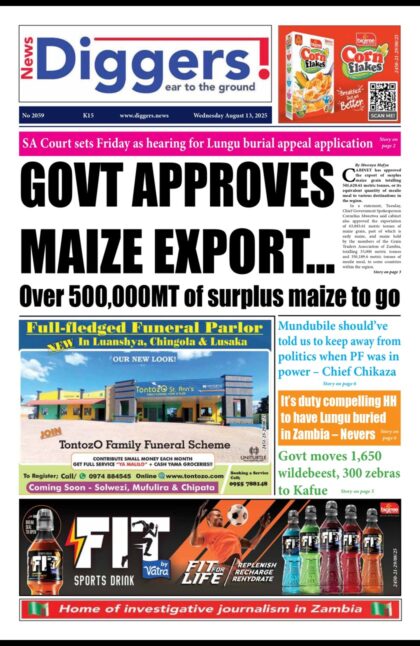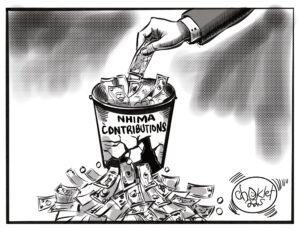MINES and Minerals Development Minister Richard Musukwa says some mining companies in Zambia are already complaining of paying more taxes due to the mining fiscal regime sliding scale mechanism that has been moved by high copper prices on the international market.
According to the London Metal Exchange (LME), copper prices hit the highest point since early 2013 fetching at US $8,292.00 per tonne.
Commenting on the rallying red metal prices, Musukwa revealed that mining companies in the country had already started complaining of being subjected to paying more in mining tax caused by the mining fiscal regime sliding scale mechanism, which responded to rising copper prices on the international market.
Musukwa insisted that Zambia was now in a favourable position to benefit from high copper prices resulting from the mining tax regime, which took effect, January 1, 2019.
“Government is not putting a mechanism to benefit from the high price of copper today; we already put in the tax measures that we had generated in our scale-up mechanism. We have trigger points when the copper reaches this level, it triggers to the next level, when it reaches this level it reaches; it triggers to the next level. So, we already have trigger points to benefit from the high price of the copper and Zambians must be comforted that we are benefiting. Already, some mining houses have started complaining because now they have to pay more. They never knew that the price would reach that. They are complaining because of the high price of copper because they have to pay more. They have to pay more taxes because in our tax measures, if you have seen, there is what we call the (sliding) scaling method. So, the scaling method tells you when you are at US $5,000 (per tonne), you pay so much; when you are US $6,000 you pay so much; when you are over US $7,000, you pay so much,” Musukwa said.
“So, in terms of the beneficiation from the mining industry, we already provided a mechanism in the tax measures through a sliding scale. The sliding scale triggers tax commensurate to the price of the commodity. That is what we are beniting from, we are benefiting from the tax measures provided by government in the budget in the last couple of years through a sliding scale. Sliding scale triggers what tax must be paid if we say US $5,000, what tax must be paid if it’s US $6,000. The sliding scale was developed by government and the mining industries themselves, it was actually a preposition from the mining industry, because at that time, they never knew that it would reach that (price level).”
Musukwa added that the continued high price of copper on the international market was a bonus to Zambia’s economy.
“So, we cartered for everything. The price of copper is a bonus for Zambia because we actually factored that mechanism from our scaling methods. If you look at the parameters that we have set in the mining industry, the environment is thriving and conducive to promote investment because we continue to rely and depend on Foreign Direct Investment (FDI). So, government (will) continue to allow for a flexible tax regime that will promote investment and encourage investors to partner with our local people. The politicking by the opposition is meant to sway Zambians, but Zambians are able to see what we are doing in the mining sector,” said Musukwa.
The 2019 mining fiscal regime hiked mineral royalty rates by 1.5 percentage points across all levels of the sliding scale, a measure that had been in place since January 1, 2019, and moves in tandem with copper prices prevailing on the international market.
Mining companies, however, have repeatedly criticised government’s failure to remove the non-deductibility of Mineral Royalty Tax (MRT) payments, which they’ve bemoaned had resulted in double-taxation and discouraging investment in the sector.
Since the 2019 fiscal year, MRT payments have not been treated as a deductible expense when calculating corporate income tax, a provision, which has remained unchanged in this year’s budget.
According to the Chamber of Mines, a lucrative project such as the US $1 billion Kansanshi Mine Sulphide Expansion and Life of Mine Extension project had been halted due to this obstacle.
But copper mining productivity has soared among First Quantum Minerals’ (FQM) Zambian assets, with Solwezi-based Kansanshi Mining Plc and the Sentinel Copper Mine in Kalumbila District collectively producing the highest output in Africa.
























